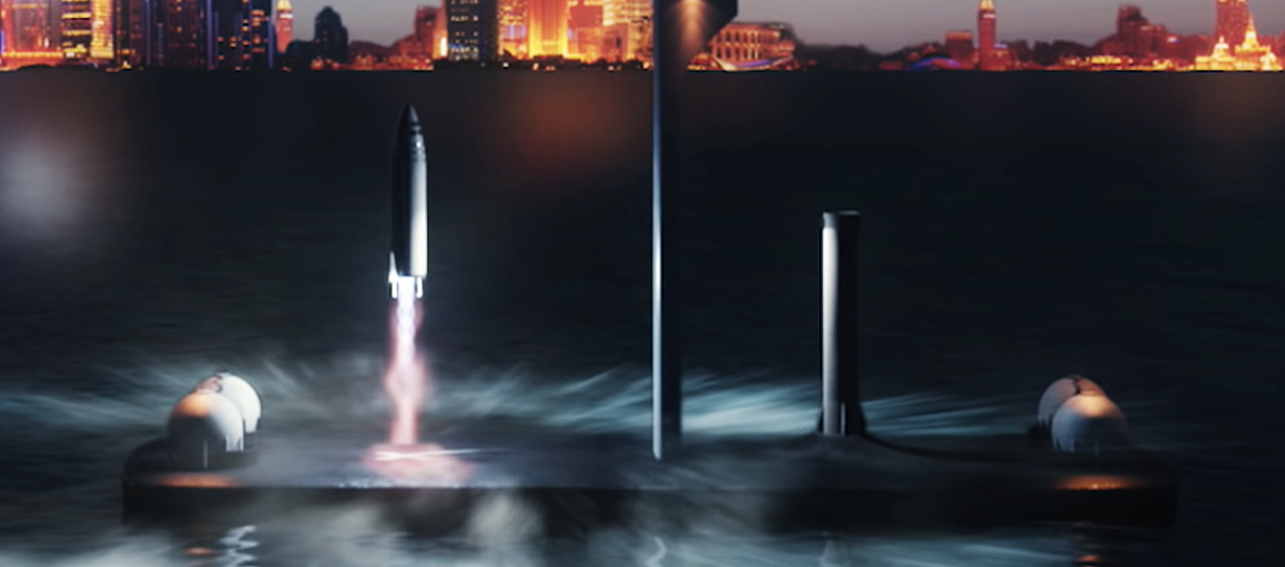
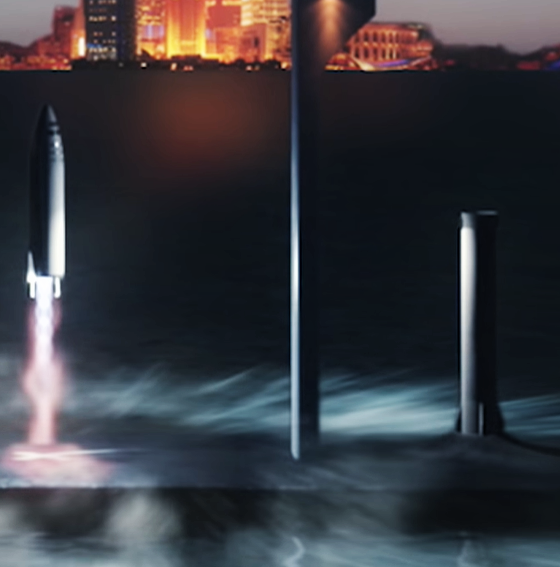
News
SpaceX is turning oil rigs into floating Starship spaceports named after Mars’ moons
Update: Responsible for initially connecting Phobos and Deimos to SpaceX, NASASpaceflight has all the details in a new article published earlier today. Check out their coverage for more information and some excellent photos – from the ground and the air – of one of the newest additions to SpaceX’s seagoing fleet.
Six months after CEO Elon Musk revealed that “SpaceX is building floating, superheavy-class spaceports” for its next-generation Starship rocket, the company has already purchased and begun converting at least two retired oil rigs.
In a rapid-fire series of investigations spurred by recent photos and suspicions published by photographer Jack Beyer, it was quickly determined that an oil rig mothballed for years in Port of Brownsville and a twin ship in nearby Galveston were purchased by “an undisclosed buyer” for ~$7 million in July 2020. Weeks later, owner Valaris (formerly EnscoRowan) officially filed for bankruptcy, explaining the sale of multiple half-billion-dollar assets for scrap prices.
An offshore drilling contractor and owner of one the largest fleets of oil and gas drilling rigs in the world, ENSCO built seven 8500-series deep-water, semi-submersible oil rigs in the late 2000s and early 2010s. ENSCO 8506, the last in the series, was built for an incredible $560 million from 2008 to 2012. Thanks to the crashing oil and gas market, SpaceX is now the proud owner of 8500 and 8501 – the first two ships in the series – for a mere $7 million.
It was quickly determined by NASASpaceflight reporter Michael Baylor that shell company Lone Star Mineral Development purchased the rigs. In the tweet’s replies, another user discovered that the LLC was directly connected to SpaceX CFO Bret Johnsen, indisputably confirming that SpaceX was the new owner of both oil rigs.
In its first act as owner, SpaceX fittingly renamed the rigs Deimos (8500) and Phobos (8501). While subverting the SpaceX norm of naming rocket landing platforms after starships from science fiction author Iain Banks’ Culture universe, the moons of Mars are a more than fitting alternative given the company’s intense focus on building a sustainable city on the planet.
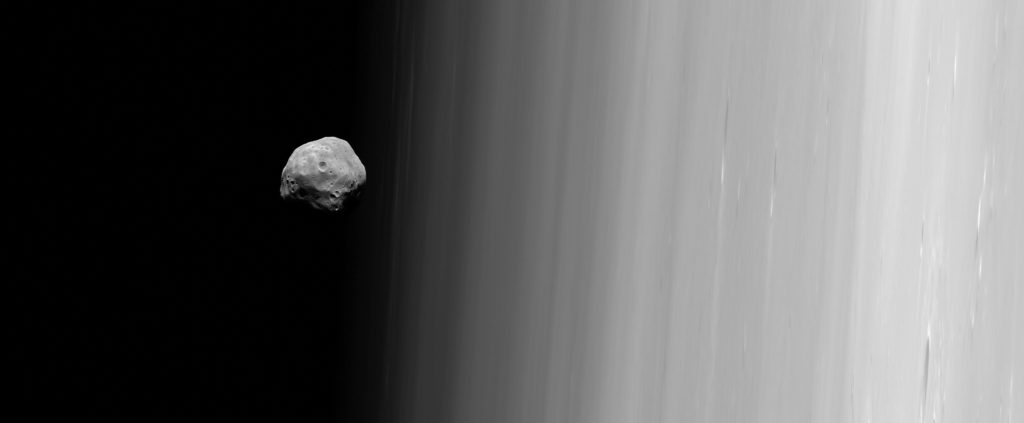
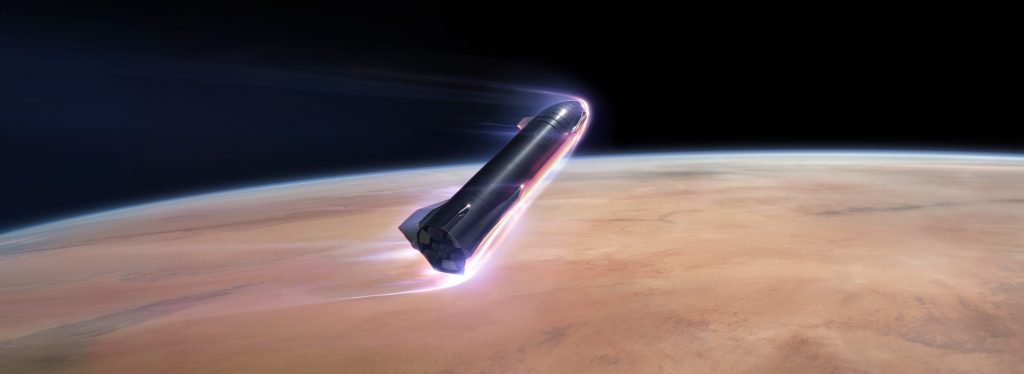
The purpose of the newest additions to SpaceX’s fleet is both simple and unclear. While the company is currently hard at work building out a land-based launch complex for orbital Starship-Super Heavy launches, vast floating launch and landing platforms have also featured in SpaceX’s official artist concepts of the rocket for the last several years. At first centered on enabling suborbital airline-style Starship flights to and from coastal cities, where sea-based platforms would be a necessity to avoid domestic regulations and extreme noise pollution, Musk ultimately positioned sea-launch as a viable alternative or complement to any and all land-based Starship launch operations.
Most recently, in June 2020, the CEO stated that SpaceX “is building floating, superheavy-class spaceports for Mars, Moon, & hypersonic travel around Earth.” Now, with work already clearly underway to convert at least two oil rigs into Starship launch and landing platforms, that concept is far closer to reality. It remains to be seen how extensive (and thus expensive) the changes SpaceX needs to make to the platforms will be but it’s safe to say that the venture is a whole lot more plausible when a dying industry’s asset depreciation is so intense that a billion dollars worth of oil rig hardware can be bought for a mere $7 million just a decade after completion.

News
Man credits Grok AI with saving his life after ER missed near-ruptured appendix
The AI flagged some of the man’s symptoms and urged him to return to the ER immediately and demand a CT scan.

A 49-year-old man has stated that xAI’s Grok ended up saving his life when the large language model identified a near-ruptured appendix that his first ER visit dismissed as acid reflux.
After being sent home from the ER, the man asked Grok to analyze his symptoms. The AI flagged some of the man’s symptoms and urged him to return immediately and demand a CT scan. The scan confirmed that something far worse than acid reflux was indeed going on.
Grok spotted what a doctor missed
In a post on Reddit, u/Tykjen noted that for 24 hours straight, he had a constant “razor-blade-level” abdominal pain that forced him into a fetal position. He had no fever or visible signs. He went to the ER, where a doctor pressed his soft belly, prescribed acid blockers, and sent him home.
The acid blockers didn’t work, and the man’s pain remained intense. He then decided to open a year-long chat he had with Grok and listed every detail that he was experiencing. The AI responded quickly. “Grok immediately flagged perforated ulcer or atypical appendicitis, told me the exact red-flag pattern I was describing, and basically said “go back right now and ask for a CT,” the man wrote in his post.
He copied Grok’s reasoning, returned to the ER, and insisted on the scan. The CT scan ultimately showed an inflamed appendix on the verge of rupture. Six hours later, the appendix was out. The man said the pain has completely vanished, and he woke up laughing under anesthesia. He was discharged the next day.
How a late-night conversation with Grok got me to demand the CT scan that saved my life from a ruptured appendix (December 2025)
byu/Tykjen ingrok
AI doctors could very well be welcomed
In the replies to his Reddit post, u/Tykjen further explained that he specifically avoided telling doctors that Grok, an AI, suggested he get a CT scan. “I did not tell them on the second visit that Grok recommended the CT scan. I had to lie. I told them my sister who’s a nurse told me to ask for the scan,” the man wrote.
One commenter noted that the use of AI in medicine will likely be welcomed, stating that “If AI could take doctors’ jobs one day, I will be happy. Doctors just don’t care anymore. It’s all a paycheck.” The Redditor replied with, “Sadly yes. That is what it felt like after the first visit. And the following night could have been my last.”
Elon Musk has been very optimistic about the potential of robots like Tesla Optimus in the medical field. Provided that they are able to achieve human-level articulation in their hands, and Tesla is able to bring down their cost through mass manufacturing, the era of AI-powered medical care could very well be closer than expected.
News
Tesla expands Model 3 lineup in Europe with most affordable variant yet
The Model 3 Standard still delivers more than 300 miles of range, potentially making it an attractive option for budget-conscious buyers.

Tesla has introduced a lower-priced Model 3 variant in Europe, expanding the lineup just two months after the vehicle’s U.S. debut. The Model 3 Standard still delivers more than 300 miles (480 km) of range, potentially making it an attractive option for budget-conscious buyers.
Tesla’s pricing strategy
The Model 3 Standard arrives as Tesla contends with declining registrations in several countries across Europe, where sales have not fully offset shifting consumer preferences. Many buyers have turned to options such as Volkswagen’s ID.3 and BYD’s Atto 3, both of which have benefited from aggressive pricing.
By removing select premium finishes and features, Tesla positioned the new Model 3 Standard as an “ultra-low cost of ownership” option of its all-electric sedan. Pricing comes in at €37,970 in Germany, NOK 330,056 in Norway, and SEK 449,990 in Sweden, depending on market. This places the Model 3 Standard well below the “premium” Model 3 trim, which starts at €45,970 in Germany.
Deliveries for the Standard model are expected to begin in the first quarter of 2026, giving Tesla an entry-level foothold in a segment that’s increasingly defined by sub-€40,000 offerings.
Tesla’s affordable vehicle push
The low-cost Model 3 follows October’s launch of a similarly positioned Model Y variant, signaling a broader shift in Tesla’s product strategy. While CEO Elon Musk has moved the company toward AI-driven initiatives such as robotaxis and humanoid robots, lower-priced vehicles remain necessary to support the company’s revenue in the near term.
Reports have indicated that Tesla previously abandoned plans for an all-new $25,000 EV, with the company opting to create cheaper versions of existing platforms instead. Analysts have flagged possible cannibalization of higher-margin models, but the move aims to counter an influx of aggressively priced entrants from China and Europe, many of which sell below $30,000. With the new Model 3 Standard, Tesla is reinforcing its volume strategy in Europe’s increasingly competitive EV landscape.
News
Tesla FSD (Supervised) stuns Germany’s biggest car magazine
FSD Supervised recognized construction zones, braked early for pedestrians, and yielded politely on narrow streets.
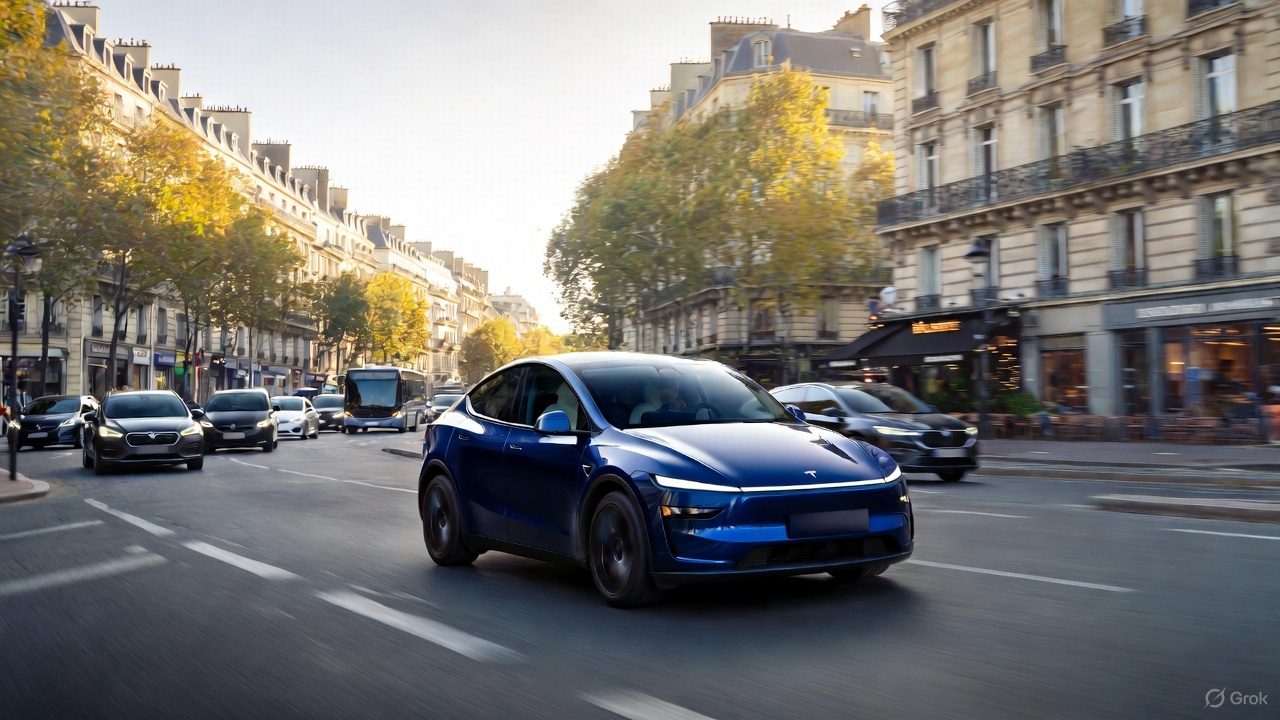
Tesla’s upcoming FSD Supervised system, set for a European debut pending regulatory approval, is showing notably refined behavior in real-world testing, including construction zones, pedestrian detection, and lane changes, as per a recent demonstration ride in Berlin.
While the system still required driver oversight, its smooth braking, steering, and decision-making illustrated how far Tesla’s driver-assistance technology has advanced ahead of a potential 2026 rollout.
FSD’s maturity in dense city driving
During the Berlin test ride with Auto Bild, Germany’s largest automotive publication, a Tesla Model 3 running FSD handled complex traffic with minimal intervention, autonomously managing braking, acceleration, steering, and overtaking up to 140 km/h. It recognized construction zones, braked early for pedestrians, and yielded politely on narrow streets.
Only one manual override was required when the system misread a converted one-way route, an example, Tesla stated, of the continuous learning baked into its vision-based architecture.
Robin Hornig of Auto Bild summed up his experience with FSD Supervised with a glowing review of the system. As per the reporter, FSD Supervised already exceeds humans with its all-around vision. “Tesla FSD Supervised sees more than I do. It doesn’t get distracted and never gets tired. I like to think I’m a good driver, but I can’t match this system’s all-around vision. It’s at its best when both work together: my experience and the Tesla’s constant attention,” the journalist wrote.
Tesla FSD in Europe
FSD Supervised is still a driver-assistance system rather than autonomous driving. Still, Auto Bild noted that Tesla’s 360-degree camera suite, constant monitoring, and high computing power mark a sizable leap from earlier iterations. Already active in the U.S., China, and several other regions, the system is currently navigating Europe’s approval pipeline. Tesla has applied for an exemption in the Netherlands, aiming to launch the feature through a free software update as early as February 2026.
What Tesla demonstrated in Berlin mirrors capabilities already common in China and the U.S., where rival automakers have rolled out hands-free or city-navigation systems. Europe, however, remains behind due to a stricter certification environment, though Tesla is currently hard at work pushing for FSD Supervised’s approval in several countries in the region.








